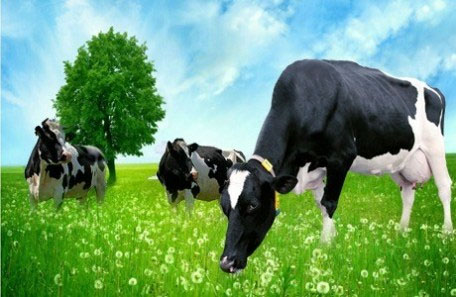Pakistan Economic Survey 2019-20
Gross value addition of livestock up by Rs1,446b
Observer Report
Islamabad
The Federal Government, Thursday, unveiled the Pakistan Economic Survey for fiscal year 2019-20. The survey was launched by Advisor on Finance Dr. Abdul Hafeez Shaikh at a news conference in Islamabad.
Gross Value Addition of Livestock
Gross value addition of livestock during fiscal year 2019-20 increased by 2.5 percent as it was recorded at Rs 1,446 billion as compared to Rs1,430 billion of same period of last year.
According the Economic Survey 2019-20, estimated livestock population including cattle was recorded at 49.6 million, buffalo 41.2 million, sheep 31.2 million. The population of other cattle like goat stood at 78.2 million, camels 1.1 million, horses 0.4 million and asses 5.5 million.
Meanwhile, the poultry meat production showed a growth of of 9.1 percent whereas egg production showed a growth of 5.6 percent to 20.0 billion numbers during 2019-20 as compared to previous year. The transformation of poultry production in the controlled shed system was making a tremendous difference of quantity and quality of poultry production.
There were now over 6,500 controlled environment poultry sheds in the country which indicates that poultry sector is moving in the direction of modernization and using advance technology. Besides human loss, COVID-19 pandemic posed a negative impact on Pakistan’s economy. By the side of demand and supply chains the pandemic affected all sectors of the economy including livestock. The lockdown has not only struck the domestic demand for livestock commodities, but has also generated supply and demand issues for exports.
This situation has negatively impacted the livelihoods of farmers and other players along the entire value chain of the livestock commodities and they are facing challenges in repaying their outstanding loans.
Telecom Sector
The telecom sector contributed Rs 173.22 billion to national exchequer in terms of taxes, regulatory fees, initial and annual license fees, activation tax, and other charges during the first two-quarters of the Financial Year 2020. According the Economic Survey 2019-20, Telecom sector has emerged as one of the vibrant sectors of Pakistan economy, generating increased revenues, investment, and contributions to the national exchequer.
According to survey, from July 2015 to February 2020, the telecom sector has attracted over $ 1.5 billion Foreign Direct Investment inflows, whereas a total of $ 8.5 billion has been invested by telecom players in Pakistan since 2002. Commercial launch of 3G and 4G services has opened new opportunities for revenue generation for mobile operators and has enabled the development of new applications and database services.
Annual revenues from the telecom sector have reached an estimated Rs 553.8 billion during FY2019, up from Rs 440 billion last year, registering an annual growth of percent. Revenues from the telecom sector have reached an estimated Rs 276.5 billion in the first two quarter of FY2020.
Agriculture Credit Disbursement
The agriculture credit disbursement witnessed about 13.3 percent growth during the fiscal year 2019-20 as compared to the disbursement of same period of last year. According to the Economic Survey 2019-20, during the period from July-March 2019-20, banks disbursed Rs 912.2 billion which was 67.6 percent of the overall annual target and 13.3 percent higher than the disbursement of Rs 804.9 billion made during the same period of last year. Similarly, the outstanding portfolio of agriculture loans increased by Rs42.2 billion from Rs 529.9 billion to Rs 572.1 billion or 7.9 percent by the end of March 2020 as compared to the same period of last year.
In terms of outreach, the numbers of outstanding borrowers reached to 3.85 million in March 2020. The total annual agriculture credit target had further assigned amongst different banks and an amount of Rs 705 billion assigned to the five major commercial banks and Rs 253.6 billion to 14 domestic private banks, Rs 100 billion to ZTBL, Rs 13 billion to Punjab Provincial Cooperative Bank and Rs 55 billion to five Islamic banks.
Among the microfinance institutes, the disbursement target of Rs184 billion had assigned to 11 microfinance banks.
Large Scale Manufacturing
According to the Pakistan Economic Survey 2019-20, Textile, the item with the heaviest weight, observed moderate growth up till Feb 2020 and witnessed a hefty decline in Mar 2020 due to supply disruptions. Second heavy weight item Food, Beverages and Tobacco witnessed a tremendous growth of 122 percent in Dec 2019 on account of sugar production.
Coke and Petroleum products observed a major slump in Feb 2020, a 33 percent decline. Demand and supply bottlenecks have adversely hit the petroleum industry. Automobile, Non-metallic Mineral Products and Electronics have also showed mixed growth. Fertilizers, after a consecutive decline, have started showing some signs of recovery from Feb 2020. All manufacturing sectors except Fertilizers, have witnessed decline in Mar 2020 in the wake of business closures due to COVID-19 crisis.
Readymade Garments Exports
The readymade garment exports increased by 10.97 percent during July-March 2019-20, according to the Pakistan Economic Survey. Exports increased from 38.7 million dozen to 42.7 million dozen of various types of readymade garments worth US$ 1955.7 million during Jul-Mar FY2019 as compared to US$ 2170.5 million during Jul-Mar FY2020. The readymade garment industry has emerged as one of the important small-scale industries in Pakistan with large demand of its products both at home and abroad. The local requirements of readymade garments are almost fully met by this industry. The garment industry is also a good source of providing employment opportunities to a large number of people at a very low capital investment.










